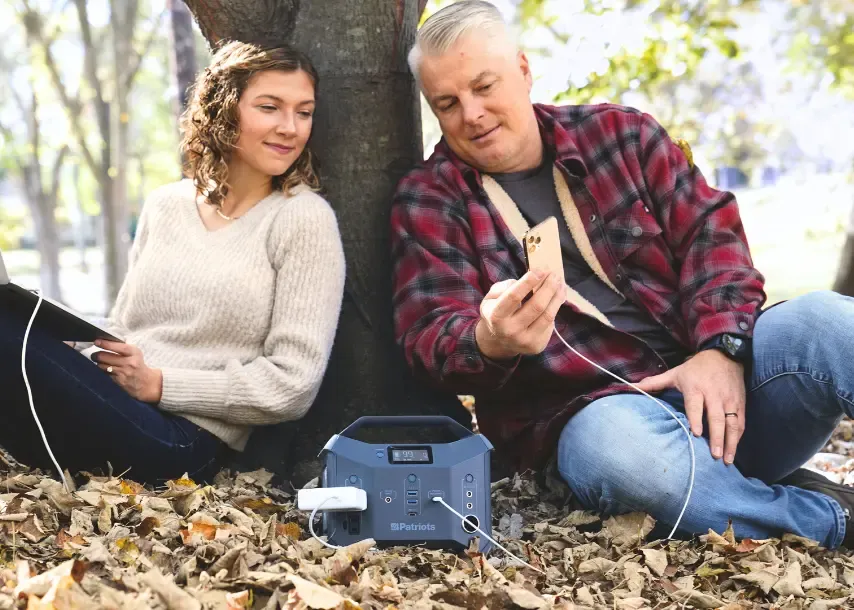What Do Fall Activities & Survival Have in Common?

What does fall mean to you?
For some, it’s football season, cool evenings, and the smell of wood smoke in the air. For others, it’s a chance to slow down, gather with family, and enjoy the simple things — like hot cider, flannel shirts, and time spent outdoors.
But for me? Fall is also a reminder that change is coming — shorter days, colder nights, and the perfect time to make sure my family is ready for whatever winter (or the world) might throw our way.
Today, I’m sharing 13 fall activity ideas that blend family fun with real-world preparedness.
Each one is designed to help you enjoy the season and build practical skills that could make a difference in a crisis. Because being ready doesn’t have to be hard work — sometimes, it can be a good time.
13 Ways to Fall In Love with Preparing
- Take a hike in the woods or in a state park. While getting back to nature, you can practice for a potential bug-out in the woods. Including distinguishing between safe and unsafe plants and berries.
- Go on a camping trip. This will be good practice for preparing to take care of your power, food, and shelter needs in the outdoors. It will remind you of which portable items you most need when you’re on the go.
- Get lost in a corn maize. Then use your deductive reasoning and any tools at your disposal such as a GPS to practice escaping from a situation in which you feel trapped in order to reach safety.
- Walk or run a fall 5K. This is a great way to help build up the stamina you will need for a bug-out and/or survival scenario.
- Visit a farmer’s market and purchase fresh fruits and vegetables you can freeze for meals in the winter when it may be too cold to go to the store.
- Plant fall crops in your garden for harvesting later in the year or in the spring. Some plants do very well in the fall, including carrots, beets, Brussels sprouts, broccoli, cauliflower, and spinach.
- Carve pumpkins. This is good practice for using a survival knife, as you may be out of the habit of using it regularly.
- Set up an apple toss. Aiming for a basket will help improve the physical dexterity you will need to deal with an emergency.
- Rake leaves. Does that sound more like work than play? Well, think about some of the preparedness uses you could have for leaves. Including composting for your garden, saving for tinder, cushioning your feet to avoid blisters, and insulation and padding for a sleeping bag,
- Take family fall photos. You can enjoy these outdoors photos now, but also save them for potential identification purposes should your family get separated during a disaster.
- Go to the library on an inclement day when you can’t enjoy the outdoors and check out a couple of books on survival and preparedness.
- Get a jumpstart on holiday shopping. This is also a very good reminder to get ahead in your preparedness efforts.
- Use a mini solar-powered generator to power a slow cooker to make a hot meal or heat up your apple cider during a power outage. This will be good practice should a blackout last longer than normal this fall or winter.

💡 Tip: Before winter hits, test your emergency gear — including flashlights, solar generators, and backup food supplies — to make sure everything’s ready when you need it most.
Fall is a wonderful season to enjoy the outdoors — crisp air, beautiful colors, and time well spent with family.
But it’s also the perfect reminder to prepare. Each of these activities can help you build confidence, learn new skills, and strengthen your family’s readiness — all while having fun together.
Because at the end of the day, preparedness isn’t about fear. It’s about freedom, peace of mind, and knowing you can take care of your own — no matter what comes your way.
Top Emergency Essentials
References & Resources:
- National Oceanic and Atmosphere Administration (NOAA): What's the Difference Between a Hurricane Watch and a Warning?
- NOAA: Prediction remains on track for above-normal Atlantic hurricane season
- NOAA: Find your Evacuation Zone
- National Hurricane Center (NHC): Tropical Cyclone Climatology
- NHC: Storm Surge Products
- NHC: How to Use the Cone Graphic
- Ready.gov: Evacuation
- Federal Emergency Management Administration (FEMA): The National Risk Index
- FEMA: Know Your Alerts
- Environmental Protection Agency (EPA): Emergency Disinfection of Drinking Water
- Center for Disease Control (CDC): Keep Food Safe After a Disaster or Emergency
